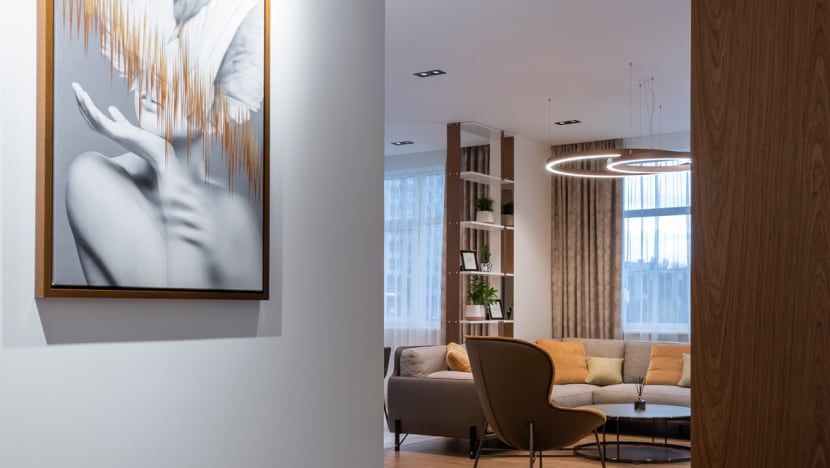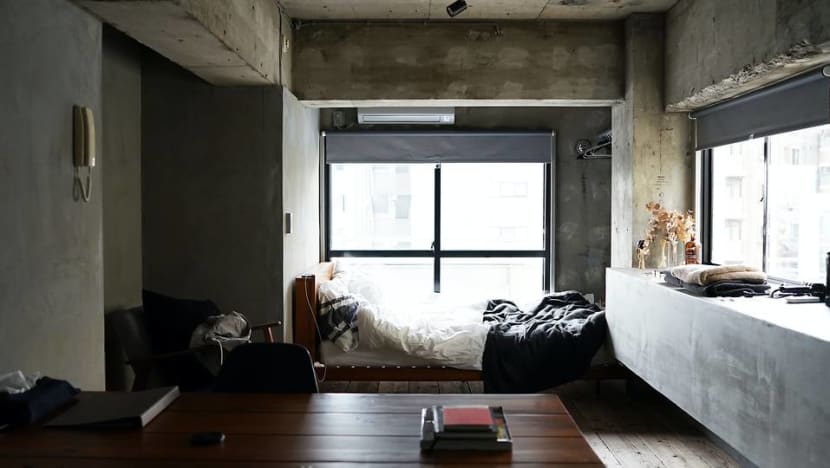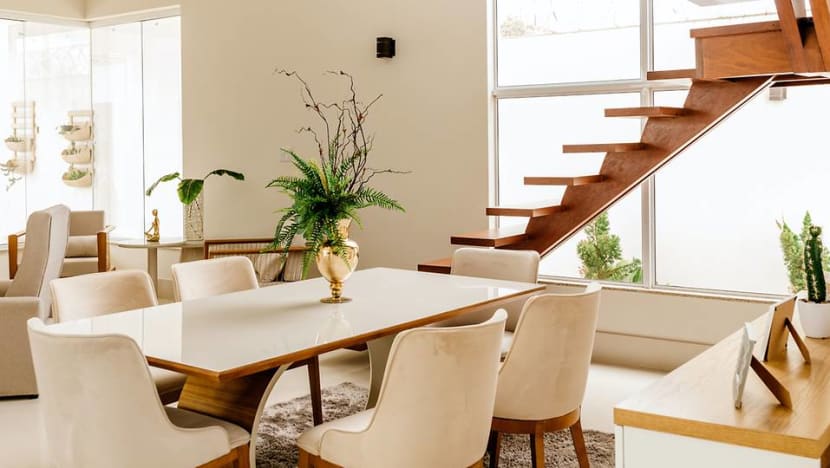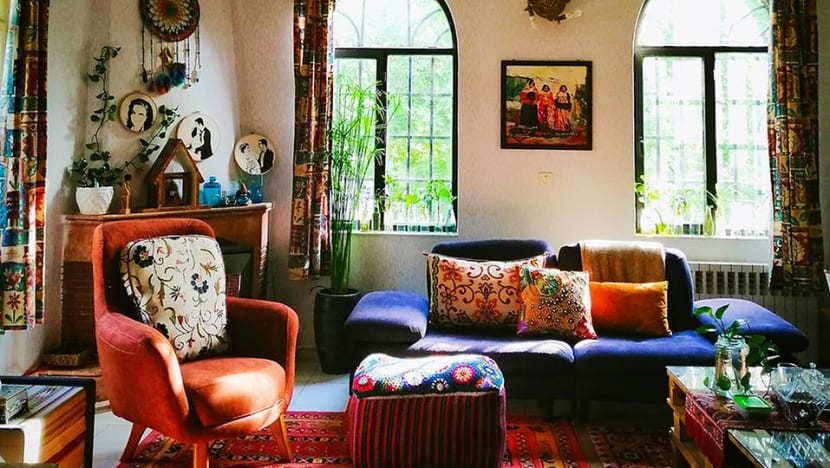Singapore design experts share: Interior trends that need to die
Renovating your home? You might want to think twice if you have these design trends in mind.

Stylish or cold? The use of too much concrete in a home can be a disaster. (Photo: Unsplash)
Interior design trends are constantly changing. Sometimes, it’s hard to keep up with what's in and what's out. But while popular styles come and go, there are a few that Singapore interior designers wish would be nixed for good.
Design may be subjective, but if you had some of the following ideas in mind, pay attention to what these experts have to say. After all, we've all made decisions we regretted later on.
EXPOSED BRICK WALLS
When it comes to interior design, there are certain styles that look good, but aren’t exactly practical. “If there is any trend I wish isn't in trend anymore, I have to say it has to be the request of having exposed brick walls at home,” said Larry Lim, managing partner of Summerhaus D’zign.

“Brick walls have been so overused in the last couple of years, they are almost synonymous with the Industrial and Scandinavian styles, especially when paired with raw cemented flooring or pale wood cabinets. They seem to have become the go-to feature for these looks even though there are so much more in these styles,” Lim continued.
“Ubiquity aside, though real bricks offer authenticity, one disadvantage is that they are not child-friendly due to the raw and rough surfaces which may present abrasion risks,” he cautioned. “However, using replacements like wallpaper with brick prints or faux bricks loses the natural appeal.”
"Ubiquity aside, though real bricks offer authenticity, one disadvantage is that they are not child-friendly due to the raw and rough surfaces which may present abrasion risks." – Larry Lim
PARQUET FLOORING
Although parquet flooring may not be as popular now as it was in the past, “a lot of private houses still can’t let go of parquet”, shared Beam Ker, director and co-founder of Luxur.

As parquet is derived from a variety of wood sources such as the pine tree, oak tree, walnut tree and more, some sourcing methods are not environmentally friendly, Ker added.
“If we want to save the world, we need to stop taking down trees. Parquet is also harder to maintain and repair, and scratches easily. These days, I often try to educate my clients to replace parquet with tiles or [engineered] wood [which uses less trees because it’s bonded to other man made supplies]. Since there are lots of materials on the market that can achieve the look of parquet, why not make the switch?” she urged.
CONCRETE EVERYWHERE
Over the past few years, the industrial style has been extremely popular with homeowners. “The use of raw concrete is associated with the Brutalist style in architecture and remains an important influence in both architecture and interior design,” shared Tan Chun Hao, co-founder of FOMA Architects.

“Nowadays, however, interior designers tend to overuse concrete finishes in residential projects, applying it all over the space from living room to bathroom, stretching from floor to ceiling, to achieve the industrial look. The result is a dull atmosphere with cold concrete floor and stark grey walls which is not conducive for living. Furthermore, when a concrete floor is wet, it is usually slippery and poses a safety hazard to people, especially the elderly,” Tan cautioned.
OPEN-CONCEPT WARDROBES
A walk-in-wardrobe is nice to have, but one that’s open isn’t quite a pretty sight. “It looks nice in magazines and on Pinterest. However, the reality is you’ll usually get a really messy and dirty wardrobe. Your room will turn into a big laundry pile that’s open to the scrutiny from friends and family members,” Tan shared.

“Unless of course you are disciplined enough to categorise and arrange your clothes according to colours and length, with matching hangers. Or if you’re Batman and you only have one type of outfit!” he joked.
READ> Singaporeans are sprucing up their homes. What sort of furniture are they buying?
(NOT SO) SCANDINAVIAN DESIGN
Scandinavian design is lauded for being timeless and easy on the eyes. “But while Scandinavian design espouses authentic design principles such as functionality, simplicity, minimalism and craftsmanship, I have seen how many clients and interior designers reduce it to an aesthetic trend, using light-coloured wood and whitewashed walls, and later filling up the space with too many decorative items,” shared Diong Fuhan, founder of Quod Architects.

“It is important to think about whether a minimalist aesthetic suits your lifestyle requirements. If not, you can always incorporate Nordic design sensibilities with a feature light or piece of furniture,” she advised.
"It is important to think about whether a minimalist aesthetic suits your lifestyle requirements." – Diong Fuhan
COLOURFUL HOMES
If you were thinking of a rainbow spectrum of colours for your home, you might want to rethink that decision. "Colourful homes are one of the design trends that I will not miss. Our homes should not be like Spring/Summer and Autumn/Winter fashion seasons, where colours go in and out of season. Trends are meant to fade, and as far as colours are concerned, interior design for homes should be represented with timelessness,” shared Terence Neo, Design Director of EightyTwo.

“The personality of the homeowners can be created through styling their homes with artworks and collectables – in a sense, dressing or accessorising the space. The idea of a home is a place for respite, a sanctuary where we can unwind and rest after a long day of work. The choice of colours should be kept to a selection that exudes calmness and evokes tranquility,” he counselled.
"The idea of a home is a place for respite, a sanctuary where we can unwind and rest after a long day of work. The choice of colours should be kept to a selection that exudes calmness and evokes tranquility." – Terence Neo
ECLECTICISM
For some, eclecticism is a unique aesthetic, a mix of several different decorating styles. However, on top of colourful homes, eclecticism is one of the design trends that Neo will not miss.

"Beautiful homes are invariably imbued with form and function. Fluidity, cohesive spaces and seamless transitions showcase a better understanding of the homeowners' lifestyle and their habits and interests. Eclecticism, however, represents a mashup of different styles that aims to often confuse and also disrupt that balance,” he shared.
“At first glance, it could be a work of art and creativity – but over time, it is often confusing, like fusion food!" the designer added.














